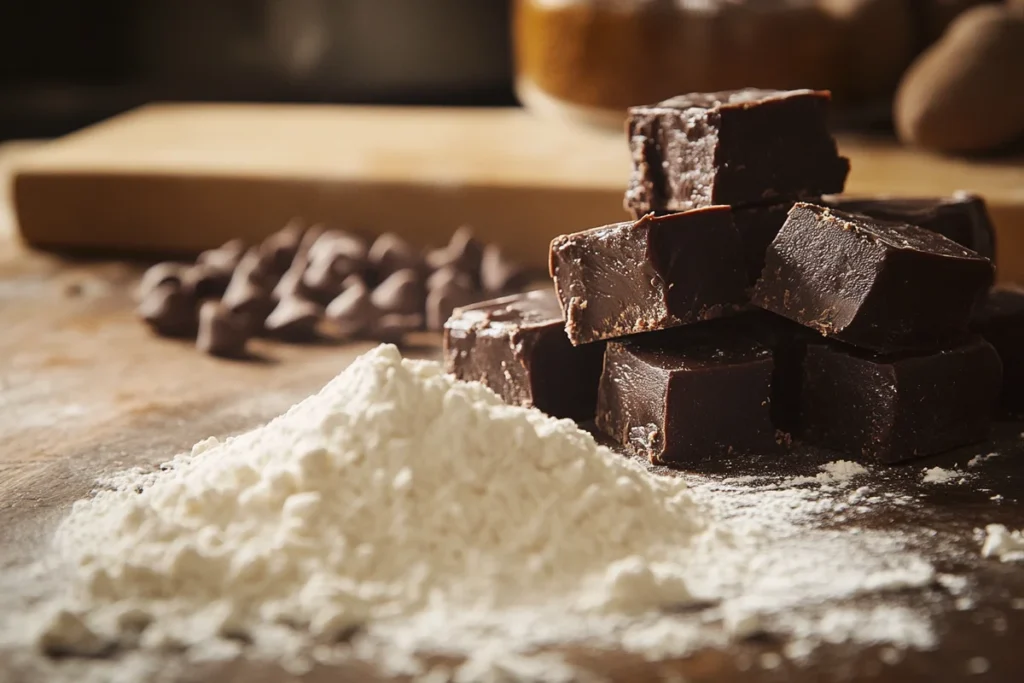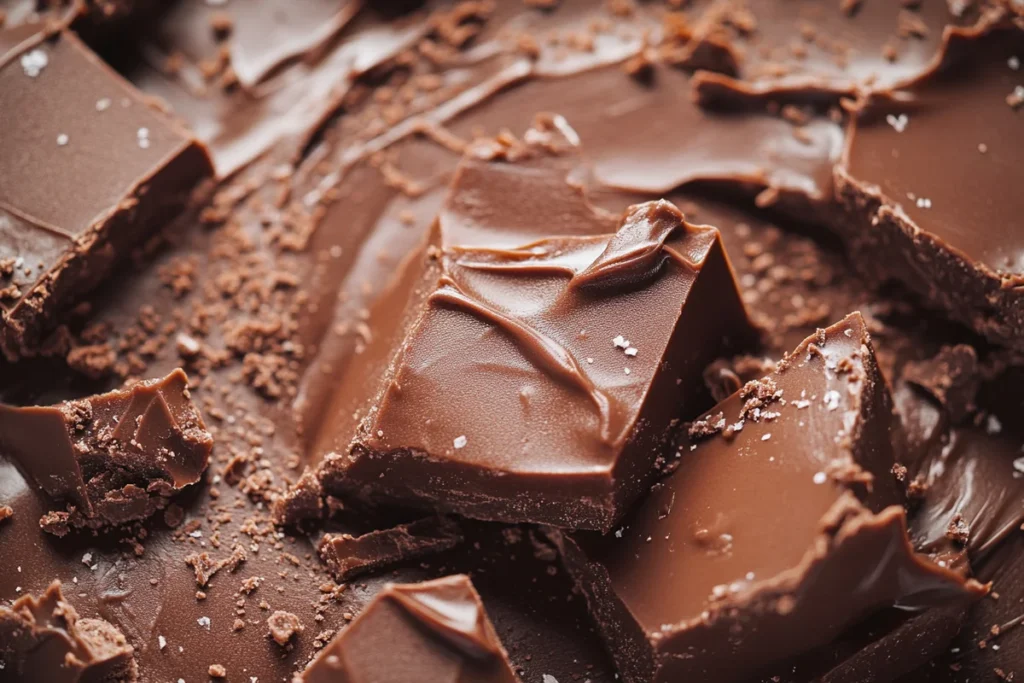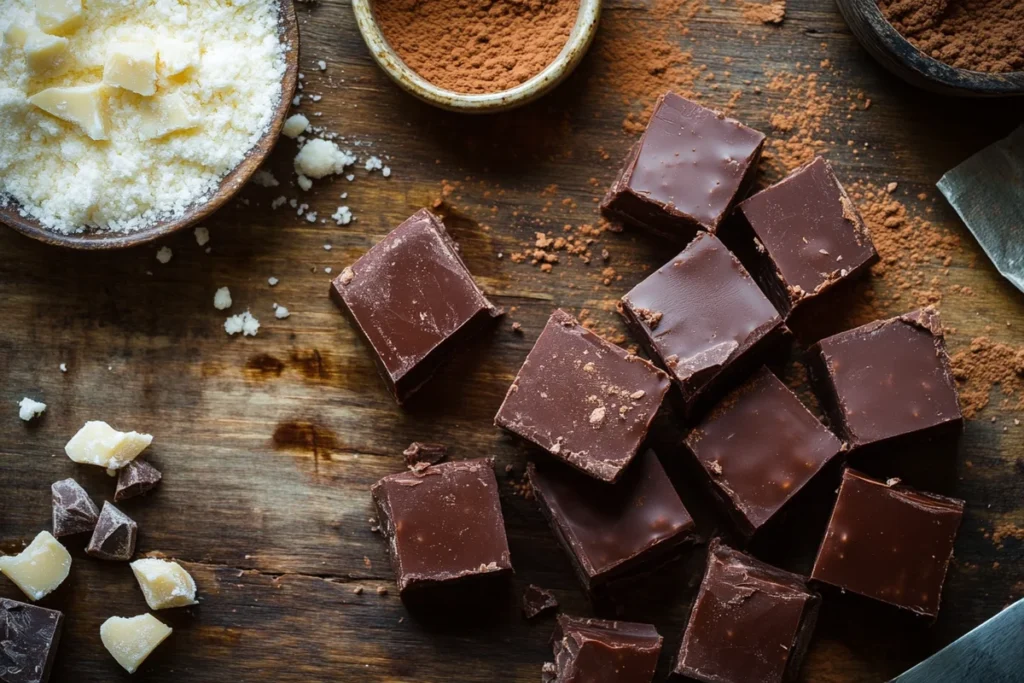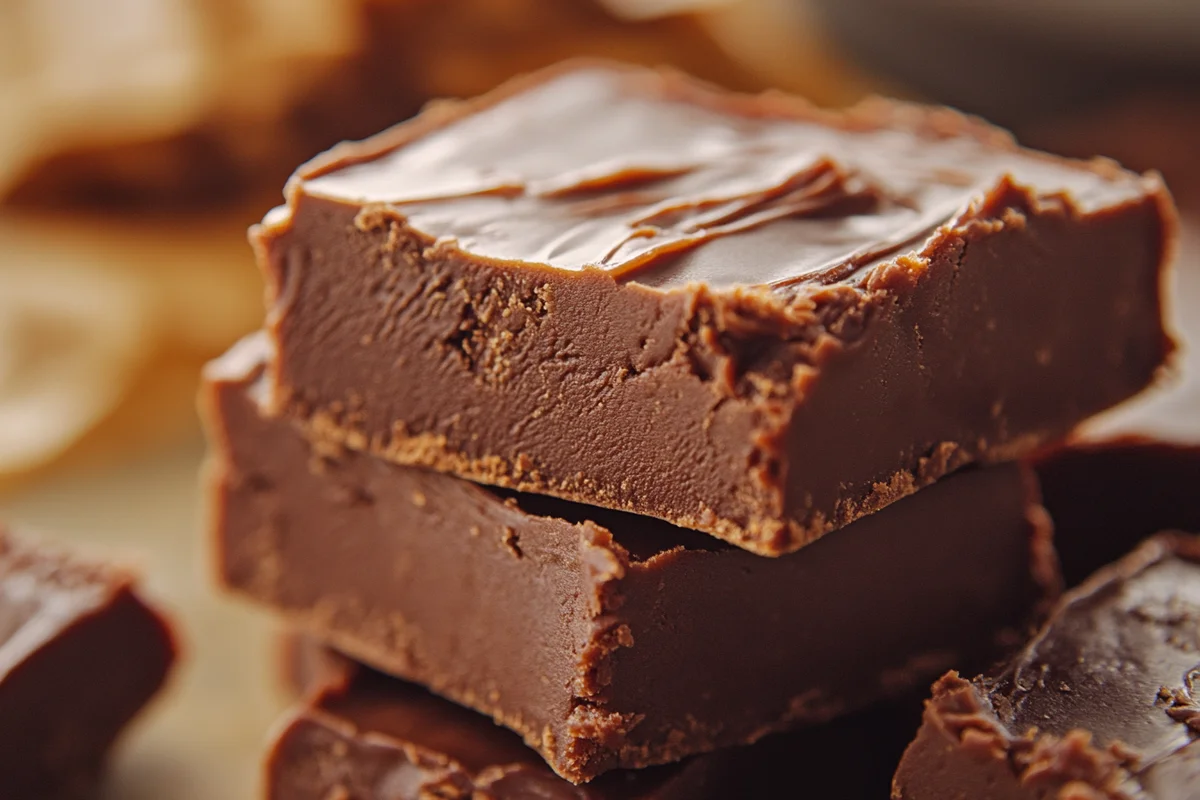If you’ve ever wondered what is the secret to perfect fudge, you’re not alone. Achieving that smooth, melt-in-your-mouth texture while avoiding graininess is a challenge that many face. In this guide, we’ll dive deep into making perfect fudge, sharing the tips and tricks you need to get it right every time.
The History of Fudge
Fudge has been a beloved treat for over a century. It first gained popularity in the U.S. in the late 1800s and has since become a staple at fairs, festivals, and holiday gatherings. While it might seem like a simple dessert, making perfect fudge requires precision and care.
The Science Behind Fudge
The secret to perfect fudge lies in mastering the science of sugar crystallization. Sugar crystals must form the right way to achieve the desired creamy texture. Here are some key factors to consider:
- Temperature: To create the proper texture, the sugar mixture must reach 234°F (the softball stage).
- Cooling process: Allowing the fudge to cool without stirring is critical to preventing grainy sugar crystals from forming.
- Ingredients: The butter, cream, and sugar must be balanced to achieve a smooth texture.
For more on the science behind fudge-making, check out this Food Chemistry of Fudge guide.
Critical Ingredients for Perfect Fudge
Learning the secret to perfect fudge all starts with the ingredients. Using high-quality, fresh ingredients can significantly improve your results.
- Sugar: Use granulated sugar, but some recipes call for brown sugar or a mix.
- Butter: Always use unsalted butter for a creamier texture.
- Cream or milk: Heavy cream offers a richer flavor, but evaporated milk can also be used.
- Vanilla: A high-quality vanilla extract enhances the flavor.

The Importance of Temperature Control
One of the biggest secrets to perfect fudge is managing the temperature precisely. Here’s what you need to do:
- Use a candy thermometer: This tool ensures your mixture reaches the right temperature.
- Softball stage: Cook your sugar mixture until it reaches 234°F. It is going higher or lower than this temperature can cause the fudge to be too soft or too grainy.
- Let it cool without stirring: Once you’ve reached the right temperature, let your mixture cool to around 110°F before stirring. Stirring too soon will result in grainy fudge.
For more in-depth tips, check out this Ultimate Guide to Fudge Making.
Stirring Technique for Creamy Fudge
Stirring the fudge mixture at the right time and for the right amount of time is critical. Follow these steps:
- Please wait until it cools: Don’t stir your fudge until it has cooled to about 110°F.
- Vigorous stirring: Once it’s cooled, stir it vigorously. This helps create the creamy texture you want by forming smaller sugar crystals.
- Avoid over-stirring: Stirring too long can break the texture and produce a grainy fudge.
Cooling and Setting Fudge
Another crucial part of understanding the secret to perfect fudge is getting the cooling process right. Follow these tips:
- Cool at room temperature: Don’t rush the process by placing the fudge in the fridge. Cooling too quickly can cause the texture to become grainy.
- Use parchment paper: Line your pan with parchment paper to make removing and cutting the fudge easier.
- Let it set for a few hours: Give the fudge time to set at room temperature. This can take a few hours but ensures the best consistency.
Flavor Variations for Fudge
Once you’ve mastered the basics, you can experiment with different flavors. Here are some popular options:

- Chocolate fudge: Classic and rich, this is the most common flavor.
- Peanut butter fudge: Add creamy peanut butter for a salty-sweet combination.
- Vanilla fudge: For a lighter, more delicate taste, opt for a vanilla-based fudge.
- Nut additions: Almonds, walnuts, or pecans add a crunchy texture to your smooth fudge.
Common Fudge-Making Mistakes to Avoid
If your fudge isn’t turning out perfectly, you might be making one of these common mistakes:
- Incorrect temperature: Not cooking the sugar mixture to the right temperature can cause it to be too soft or hard.
- Stirring too early: Stirring before the mixture has cooled can lead to a grainy texture.
- Rushing the cooling process: Don’t put the fudge in the fridge to cool faster. Let it set at room temperature for the best texture.
Tips for Fixing Fudge That Didn’t Set Properly
Sometimes, despite your best efforts, the fudge doesn’t set how you hoped. Here are some fixes:
- Soft fudge: If your fudge is too soft, it likely didn’t reach the right temperature. You can try reheating it and cooking it a bit longer.
- Grainy fudge: If it is grainy, sugar crystals formed too early. Try adding a tablespoon of water and reheating it to dissolve the crystals.

Perfect Fudge Recipe
Here’s a foolproof recipe for making perfect fudge every time:
Ingredients:
- 2 cups of granulated sugar
- 1/2 cup of unsalted butter
- 3/4 cup of heavy cream
- 1 tsp of vanilla extract
- Pinch of salt
Instructions:
- Combine the sugar, butter, and cream in a saucepan.
- Heat the mixture over medium heat until it reaches 234°F, using a candy thermometer.
- Remove from heat and let cool to 110°F without stirring.
- Stir in vanilla extract and beat the mixture vigorously until smooth.
- Pour into a parchment-lined pan and allow it to set at room temperature for several hours.
FAQs on Making Perfect Fudge
- Why is my fudge grainy?
- Grainy fudge happens when sugar crystals form too early in the cooling process. Make sure to wait until the mixture cools to 110°F before stirring.
- What temperature should fudge be cooked to?
- The ideal temperature is 234°F, known as the softball stage.
- Can I fix the fudge that didn’t set?
- You can reheat the fudge, return it to the proper temperature, and allow it to set again.
- How long does fudge last?
- Fudge can last up to two weeks if stored in an airtight container at room temperature.
- Can you freeze fudge?
- Yes, fudge can be frozen for up to three months. Just wrap it tightly in plastic wrap and place it in an airtight container before freezing.
Conclusion
So, what is the secret to perfect fudge? It all comes down to controlling the temperature, using the right ingredients, and following precise techniques. Whether you’re a seasoned pro or a beginner, these tips will help you create smooth, creamy, and delicious fudge every time.
By mastering these secrets and avoiding common mistakes, you’ll be able to impress your friends and family with perfect fudge. Don’t forget to experiment with different flavors and ingredients once you’ve mastered the basics!

